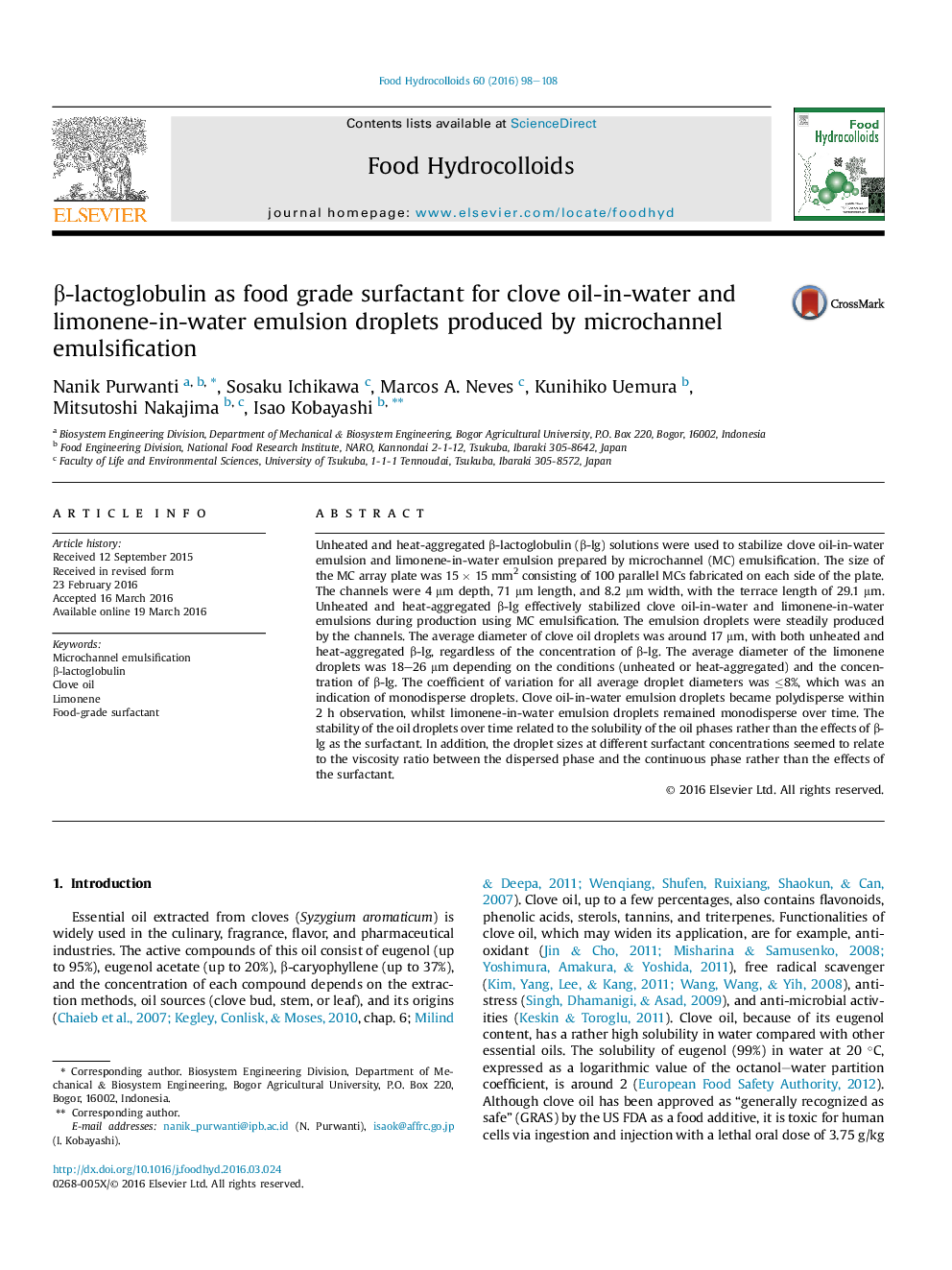| کد مقاله | کد نشریه | سال انتشار | مقاله انگلیسی | نسخه تمام متن |
|---|---|---|---|---|
| 603559 | 1454417 | 2016 | 11 صفحه PDF | دانلود رایگان |

• O/W emulsion of clove oil and limonene was produced by microchannel emulsification.
• Unheated and heat-aggregated β-lg was applied as surfactants.
• Stable production of oil droplets were observed in the microchannels.
• The stability of the oil droplets over time was affected by oil solubility.
• The viscosity ratio between phases affected the resulting droplet sizes.
Unheated and heat-aggregated β-lactoglobulin (β-lg) solutions were used to stabilize clove oil-in-water emulsion and limonene-in-water emulsion prepared by microchannel (MC) emulsification. The size of the MC array plate was 15 × 15 mm2 consisting of 100 parallel MCs fabricated on each side of the plate. The channels were 4 μm depth, 71 μm length, and 8.2 μm width, with the terrace length of 29.1 μm. Unheated and heat-aggregated β-lg effectively stabilized clove oil-in-water and limonene-in-water emulsions during production using MC emulsification. The emulsion droplets were steadily produced by the channels. The average diameter of clove oil droplets was around 17 μm, with both unheated and heat-aggregated β-lg, regardless of the concentration of β-lg. The average diameter of the limonene droplets was 18–26 μm depending on the conditions (unheated or heat-aggregated) and the concentration of β-lg. The coefficient of variation for all average droplet diameters was ≤8%, which was an indication of monodisperse droplets. Clove oil-in-water emulsion droplets became polydisperse within 2 h observation, whilst limonene-in-water emulsion droplets remained monodisperse over time. The stability of the oil droplets over time related to the solubility of the oil phases rather than the effects of β-lg as the surfactant. In addition, the droplet sizes at different surfactant concentrations seemed to relate to the viscosity ratio between the dispersed phase and the continuous phase rather than the effects of the surfactant.
Figure optionsDownload as PowerPoint slide
Journal: Food Hydrocolloids - Volume 60, October 2016, Pages 98–108